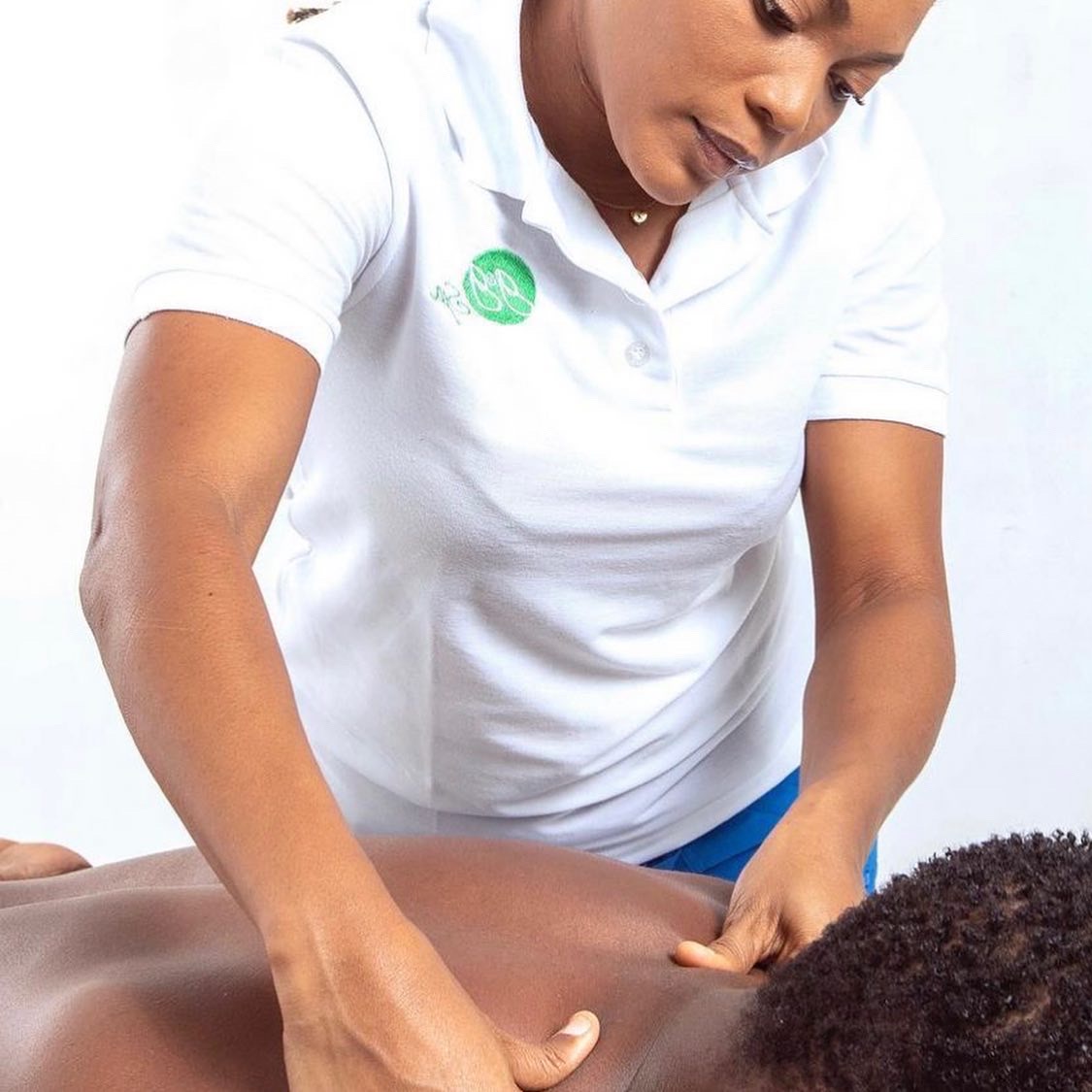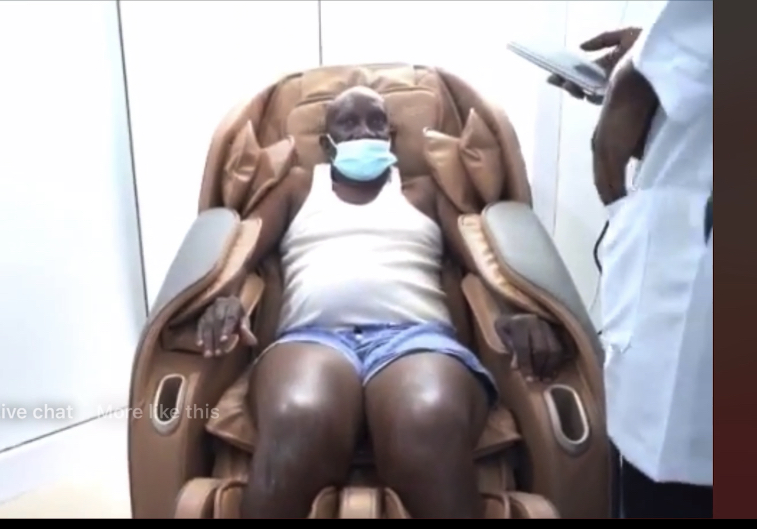
Massage
Solak Biochemist Limited provides the following massage services:
Swedish massage
Deep Tissue Massages
Chair massage.
We will elaborate more on each of the massage treatments’ starting off with Swedish Massage.

Swedish Massage is One of the most popular types of massage. It’s done to re-energize the body and boost general wellness. Percussion, kneading, vibrating, tapping, and rolling are all used in this style of massage. To protect the skin from friction, massage oil or lotion is applied.
Swedish Massage Health Benefits
Massages are a wonderful way to unwind and relax. Massage is a technique for relieving tension and pain by manipulating muscles and joints. This is accomplished by relaxing tense muscles and increasing blood flow.
A Swedish massage can be healthy to your heart as well. A masseuse (a person who performs massage) manipulates the body’s soft tissues (muscles, tendons, ligaments, and blood vessels) and improves blood circulation by using strokes that flow toward the heart.
Swedish massage may help with melancholy, stress, and anxiety problems. Back difficulties, headaches, muscle disorders, and other persistent ailments are some of the symptoms that massage therapy can help with.
Massages have also been linked to increased immunity. This can aid in the treatment of illnesses such as the common cold, asthma, diabetes, and breast cancer.
Aside from the health benefits listed above, obtaining a Swedish massage may also provide the following advantages:
Stimulation of nerves. Swedish massage stimulates nerves in different places of the body by applying pressure and moving the muscles. Nerves could be activated in a way that assists with pain and discomfort management.
Mood enhancer. Massages have been shown to increase mood by encouraging the creation of endorphins.
What to expect from a Swedish massage
Your massage will most likely take 60 to 90 minutes. Your therapist will allow you to undress quietly and lie down on the massage table, which is normally padded for increased comfort, and cover yourself with towels. You don’t have to be entirely exposed at any point; depending on the area she’s working on, your therapist will reveal a tiny bit of you at a time. If you have any concerns, don’t be afraid to express them.
At the start of your treatment, your therapist may examine your complexion and select essential oils or lotions that are appropriate for your skin type. She will use a number of strokes and methods to massage these into your body.
Some therapists choose to play music while giving massages since it can help you relax. Don’t be hesitant to say no if you don’t want it, or if anything else in the treatment room is bothering you. Being at ease in your surroundings is essential for relaxation and will help you relax more easily during your massage.
Talking is the same way. Most therapists are aware of how much communication their clients want and will limit or encourage it accordingly. Some people enjoy chatting, while others do not. It makes no difference as long as you’re at ease, relaxed, and open.
You’ll probably feel quite calm and possibly drowsy afterward, so give yourself plenty of time to relax. Enjoy the sensation of having all of your muscles gently stretched and smoothed out.
Deep tissue massage

Deep tissue massage is a common type of massage treatment for treating persistent aches and pains. By exerting concentrated pressure to the sub-layer of muscles and fascia, the connective tissue that surrounds your muscles, this treatment targets areas of stress or tightness.
Many individuals believe a regular massage to be a soothing body rub accompanied by soothing music and a pleasant scent. A deep tissue treatment may incorporate those components, but it isn’t necessarily relaxing, according to Amy Montia, PhD, LMT, and medical-massage practitioner at Physio Logic.
The advantages of deep tissue massage
According to Montia, deep tissue massage benefits the body by releasing constricted or wounded tissues. Deep tissue massage “speeds recovery and provides pain relief” by applying appropriate pressure, she says.
According to studies, deep tissue massage has the following advantages:
Range of motion is improved.
Blood pressure and heart rate should be reduced.
Pain perception is lessened.
Inflammation associated with plantar fasciitis is relieved.
Chronic and low back pain relief
Pain linked with Ankylosing Spondylitis is lessened.
When you have a deep tissue massage, what happens?
According to Chris Minehan, LMT, founder of Reclaimed Being Therapeutic Massage, “there is no standard choreography to a deep tissue massage and all therapists have distinct methods that should be adjusted to the client’s particular needs.”
Minehan normally begins with the back because it is the most commonly complained-about area. He next massages the legs, shoulders, arms, and finally the neck and head, which he claims is the most calming because of the many nerve endings in the scalp.
Montia begins her deep tissue sessions softly, working over a large area before concentrating on individual muscles or locations. Deep tissue massage may induce discomfort or even pain depending on the individual’s pain threshold. That’s
During the massage, what happens?
Your massage therapist will want to know about your trouble areas before beginning your deep tissue massage. A deep tissue massage might target one or several areas of your body.
You’ll be asked to lie on your back or stomach under a sheet once you’re ready. Your amount of undress is up to you, but the region that has to be worked on must be revealed.
The massage therapist will use a gentler touch to warm up your muscles. They’ll begin working on your trouble areas once you’ve warmed up. Deep kneading and stroking with varied degrees of severe pressure will be used.
Are there any side effects?
Following a deep tissue massage, it’s not uncommon to experience some soreness for a few days. Soreness can be relieved by using a heating pad or a cold pack wrapped in a towel.
Although massage treatment is usually considered to be safe, deep tissue massage involves extremely firm pressure and may not be suitable for everyone.
If you have any of the following conditions, see your doctor before getting a deep tissue massage:
having a clotting problem or a history of blood clots
are taking anticoagulants
suffer from a bleeding condition
have cancer or are receiving cancer treatment (chemotherapy or radiation)
Deep tissue massage should be avoided by anyone with osteoporosis or cancer that has spread to the bones, as the hard pressure employed may induce a fracture. If you’re pregnant, you should also avoid deep tissue massages. Swedish massage, for example, is a gentler style of massage that may be a better choice.
If you have an open wound or any type of skin illness, you must postpone to avoid contracting a new infection or worsening an existing one.
Chair massage
How does Chair Massage Therapy work?

In most aspects, chair massage is similar to table massage, except instead of lying on a table, customers kneel in a specialized chair with a pad and face cradle to support their head and chest. Most chairs include extended arms for better upper-body support and are height and comfort adjustable.
Then there’s the massage in an electric chair. Solak Biochemist specializes in electric chair massage, which allows clients to rest and relax while receiving a Stretch Vibrating Body Scan with Air Massage System.
The scanning, which takes place with heating, zero-gravity tilt, spine roller speed, foot roller speed, and air intensity, to make the, allows you to totally relax and enjoy the waist-heating massage therapy.
